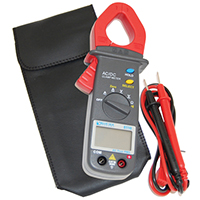Top Reasons Boats Fail, Sputtering or Losing Power
Posted by Pacer on 31st Jan 2019

Sputtering or losing power

In reality, this problem can be caused by a variety of issues. Everything from fouled or corroded spark plug wires to debris in the gas can cause sputtering or loss of power. The first step is to identify what the cause of the problem is. The easiest way to do this is by eliminating the simplest explanation first and working your way outward until you locate the issue. The most obvious answer is fuel. Just as people lose track of time, it’s equally easy to lose track of your fuel consumption. If you have plenty of fuel, then the next place to look is the fuel filter. Hopefully, you have a spare filter with you. If not, remove the current filter and see if there is any debris you can remove. While you have the filter off, make sure there is no water in your fuel. Remember, for I/O boat owners, vent the engine box before you restart the engine. If you forget this important step, the clogged filter will seem like nothing compared to your new problem. So, if you have gas and your filter is fine, the next place to look is the spark plugs. Check them one at a time and inspect the wires while you’re there. Seriously, only take one wire off at a time and make sure to put it back before removing another wire. The last thing you need is to take all the wires off only to realize you don't know the placement order to put them back. If one or more of the plugs are fouled, do your best to clean them up and remove as much of the gunk as possible. Using a rag or loose piece of cloth, you should be able to remove quite a bit of build up. You can use a knife or similar object to scrape off large pieces of build up but be careful not to damage your spark plug or inadvertently adjust your gap. Inspecting the plug wires is as easy as checking them for signs of age such as cracking or brittleness. If you still haven't found the issue, inspect your terminals and connection points. Signs of corrosion, damage, or breakage indicate it's time to replace some terminals. Make sure you use the proper crimper when installing terminals or you risk a new problem by creating a weak point in your electrical system. The proper tool guarantees the correct crimp every time and reduces the risk of issues later on. If you have checked all the items above and everything looks fine, it is time to call a repairman.
Prevention

The problem is that sometimes you can just get bad fuel. As fuel is delivered to stations, the last ones to receive the fuel get the trash that has built up on the bottom of the tank. To be honest, this isn’t really a big issue and it’s more likely that your gas has gone bad from sitting up or water has built up in your tank. When you leave a fuel tank empty condensation will build up and we all know gas and water don’t mix. If you aren’t going to be using your boat for a while, fill the tank as full as possible to prevent condensation. If it’s going to be sitting up for more than 3 or 4 months, then add a fuel stabilizer. The other way to prevent this issue is to clean and change your spark plugs and fuel filter regularly. Spark plugs are a pretty simple change and should be done based off of motor usage or a specific period of time depending on which one comes first. Check with your manufacturer and spark plug information to determine when the right time to replace them is. As far as your spark plug wires go, change them at the first sign of deterioration. Even if only one looks bad, change them all. They should all be around the same age so if one is failing, the best course of action is to play it safe, and replace all of them. It's a good idea to keep a simple toolbox on board with basic terminals and installation tools. This way you are not caught unprepared in the event that a problem arises. A basic toolbox and tool-set will make a world of difference.
Tools you'll need:
- Socket and ratchet set
- Clean rags
- Spare fuel filter
- Filter wrench
- Fuel stabilizer (if the boat will be sitting up)
- Proper crimping tool and terminals
Selecting the Correct Crimper:
When selecting the proper crimper to carry on your boat, you will want to consider one that can handle epoxy heat shrink terminals. They are the best choice for a marine environment as they add extra protection against moisture, corrosion, and abrasion. Using other types of terminals in marine conditions is acceptable but leaves your electrical system more vulnerable than it needs to be. To properly install a heat shrink terminal, make sure to use a tool that can handle the most common sizes. The VTTR-50 can crimp 22AWG to 8AWG with no need to change die sets. It offers repeatability and reliability which is why it is often chosen for use in production lines. Make sure you're not stuck on the water without the proper tool.
A Multi-meter Could Help:

Finding a problem quickly means you can solve the probelm that much faster. Using a multi-meter is a simple way to determine if you have an underlying electrical issue. A digital multi-meter is used for monitoring and testing a boat's electrical system. Pacer carries a multiple function meter ideal for safety checking and troubleshooting a boats electrical system. You can use either the clamp meter to gather information directly from cables, or you can use the included test leads directly on exposed points of contact. The benefit of using the clamp is that it allows you to measure the current in the wires on your boat without disturbing any circuits or making contact with any live terminals


